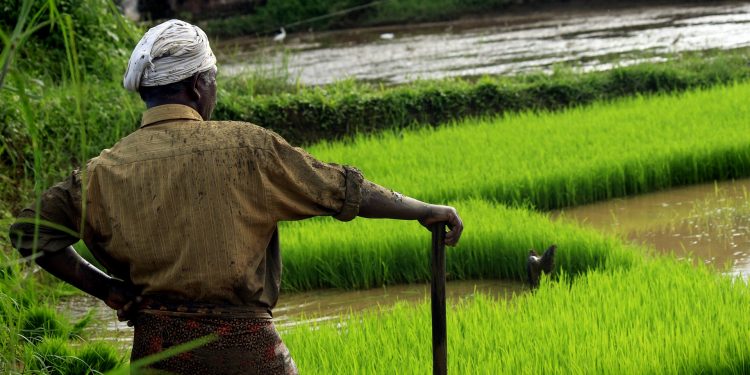Farmer Bills & The Inevitable Protests
Read about the farmer protests against three bills recently passed by the Indian government!

Farmers and supporters throughout the nation are protesting against three bills recently (and rather speedily) passed by the Indian government on September 27th. Ironically, these bills have been portrayed as “reform” bills aimed at supporting farmers and improving their quality of life by the government.
An overwhelming amount of articles and majority of media coverage seem more concerned about disputes between political parties than the core issues. Because that political narrative does a gross injustice to the real issues at hand, let’s break it down to see why these protests are occurring
in spite of a pandemic and government promises to support the needs of our farmers.
What Bills?
Before addressing the concerns of the farmers, their reasons for protesting throughout the nation, and the globalized involvement in the movement it’s important to understand what these bills are advocating for on the surface level. The three bills that are being protested against are the Farmers (Empowerment and Protection) Agreement of Price Assurance and Farm Services Bill, Farmers Produce Trade and Commerce (Promotion and Facilitation) Bill, and Essential Commodities (Amendment) Bill.
1. Farmers (Empowerment and Protection) Agreement of Price Assurance and Farm Services Bill: This bill creates a national framework for farmers and firms, processors, wholesalers, or exporters to come to an agreement about prearranged prices for produce and services in a,
“fair and transparent manner.”
2. Farmers Produce Trade and Commerce (Promotion and Facilitation) Bill: This bill creates an ecosystem with freedom of choice regarding sale/purchase of produce with competing channels, promotes inter and intra state trade outside of the APMC (Agricultural Produce Market Committees), and includes a framework for electronic trading. It gives private corporations the option to directly negotiate prices with farmers for their products and prohibits state governments from implementing market fees.
The Agricultural Product Market Committees are state government committees that aim to ensure farmers get compensated fairly for their produce. Farmers auction their produce to traders with governmental regulation on minimum prices. It prevents farmer exploitation from large corporations and ensures timely payments and fair prices.
3. Essential Commodities (Amendment) Bill: This bill redefines essential commodities and states that certain products such as cereals, pulses, potatoes, and onions can be regulated by the federal government under “extraordinary” circumstances. It also addresses stock limits and how they should be based on price rise and only if, “ (i) hundred per cent. increase in the retail price of horticultural produce; or (ii) fifty per cent. increase in the retail price of non-perishable agricultural foodstuffs, over the price prevailing immediately preceding twelve months, or average retail price of last five years, whichever is lower:”
The Problem/Proposed Solutions
At a first look and perhaps even after a glance at each of the official documents for each bill, it’s easy to assume the farmers should be throwing parties, not protesting for hours, days, and weeks. But evidently, the picture isn’t nearly as pretty and colorful as the government and other bill supporters are painting.
The first and major component of all the bills, is the lack of reassurance about the continuation of MSP (minimum support prices). Because the bills seek to increase farmer trading with big private corporations, they also simultaneously prevent assured prices for produce/services. Due to this, farmers have raised concerns about big corporations dictating the prices and terms in the near future. Farmers have advocated for the inclusion of the guarantee that MSPs will continue under these bills (something PM Modi has declared verbally, but the government has neglected to translate onto paper). Multan Singh Rana (a farmer in Punjab) defines the fear as, ”First, farmers will feel attracted towards these private players, who will offer a better price for the produce. The government mandis will pack up meanwhile and after a few years, these players will start exploiting the farmers. That’s what we fear.” So essentially, yes there is room for farmers to sell their produce at higher prices, but this comes with the caveat of struggling to meet minimum prices when there is a high supply of the produce (supply and demand 101 much?).
Another fear is concerning the inevitable increase in trade with private corporations who will initially offer more than the APMC. Eventually, farmers communicate to the public, the APMCs will take a backseat and these very same corporations will take advantage of farmers who will be vulnerable to exploitation. APMC commission agents will potentially lose commissions and mandi fees as well.
This also correlates to virtual disbandment of the mandi system (because of the lack of predefined prices) and the impact it will have on arthiyas who provide loans for these farmers and will go out of business as a result of the bills.
In this way, the deregulation of farming sales could (and most likely will) prove to be incredibly disastrous for the livelihood of farmers who currently rely heavily on MSPs and the APMC. To top it all off, they are also forced to protest for a withdrawal of the proposed Electricity (Amendment) Bill 2020, which could potentially end subsidized electricity to farmers.
The undemocratic and speedy passing of these bills has also been addressed considering the very farmers that these bills will soon impacts on a daily basis were not even consulted beforehand.
Beginning on November 6th, 250+ million people and over 500 farmer unions went on a national strike and began protesting these bills. These hundreds of thousands of farmers and supporters have been protesting for a little over two weeks in efforts to get their voices heard and garner support from the government. The movement has slowly become globalized, with citizens of countries such as Canada, the United States, and Australia protesting to show their support for farmers. In only a couple of days, December 14th, this will manifest into a hunger strike.
Why Care?
I refuse to sit here and urge you to care about the farmers in India by listing a bunch of products produced by them, because choosing to view this issue through a lens of how it impacts your pantry and the economy is hardly understanding the root of the problem here. Rather, consider the privileges of having readily access to wheat, rice, turmeric, ginger, etc at the expense of the livelihood of our hard working farmers. Think of the farmers who work tirelessly on the fields just to provide basic necessities for their families and in return only ask for the reassurance that they will be paid a minimum price for their produce and will be protected against exploitation from large corporations.
Imagine the torture and abuse through water canons and tear gas they are facing at the hands of the police/government for peacefully using their right to protest against these injustices.
Our country owes its farmers way more than minimum prices and protection from exploitation. Let’s fight for their basic rights and work our way up to dismantle the system jeopardizing the lives of our farmers.
What Can You Do?
There are a lot of actions that can be taken apart from directly protesting to help farmers and show your support for their endeavors.
Here are some of the many organizations/fundraisers supporting farmers throughout India in various ways:
- Support Poor Farmers in India
- Hartika Fundraisers
- Ten NGOs Empowering Indian Farmers
- Agriculture and Farmers’ Welfare Fund
- NGOs Helping Indian Farmers
Along with this, share informational resources (like this article) with others, get your voice heard, research more organizations and support the farmers that provide for our country at the expense of their own livelihood every day.
70% of India’s rural households depend on agriculture for their livelihood.
82% of Indian farmers are small and marginal.
10,281 farmers died by suicide in 2019.
This is not the time to turn your back to the backbones of the nation. This is the time to declare, that #ISupportFarmers.




